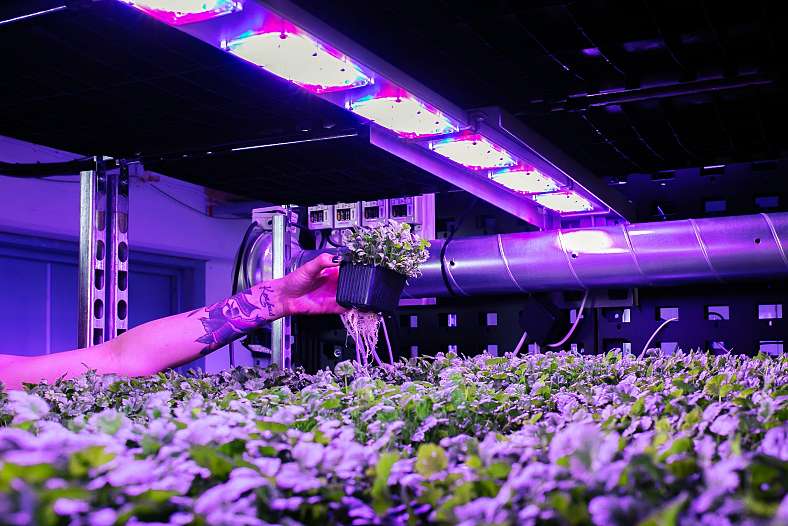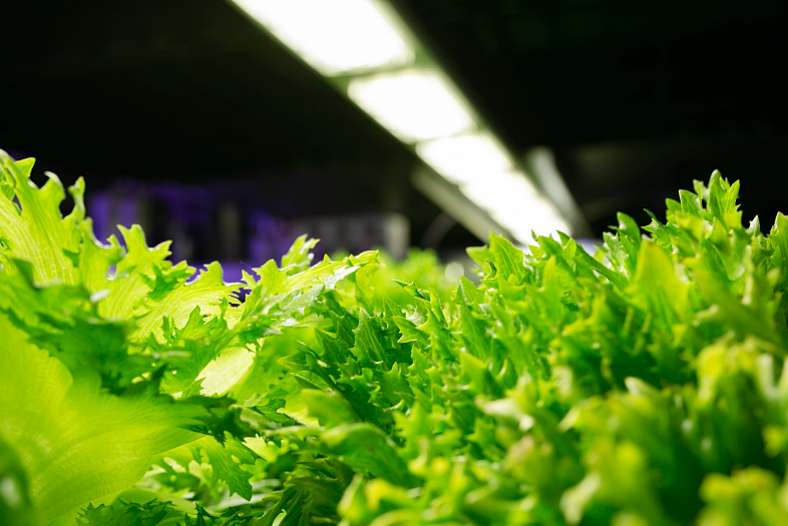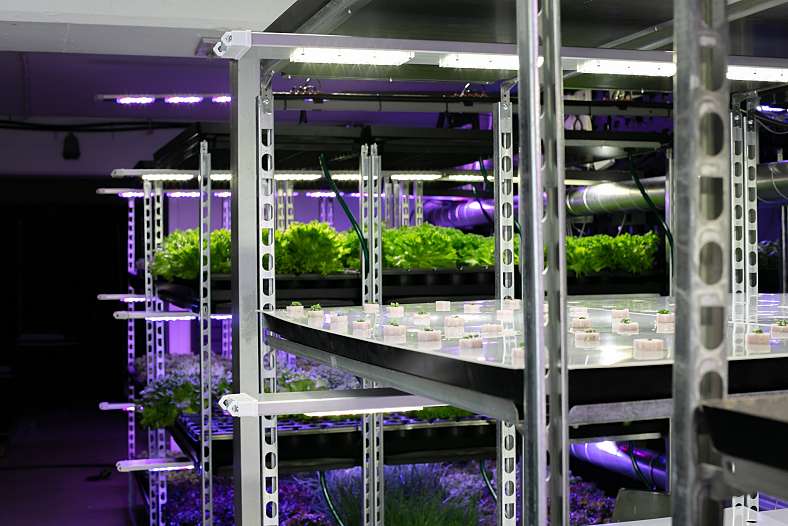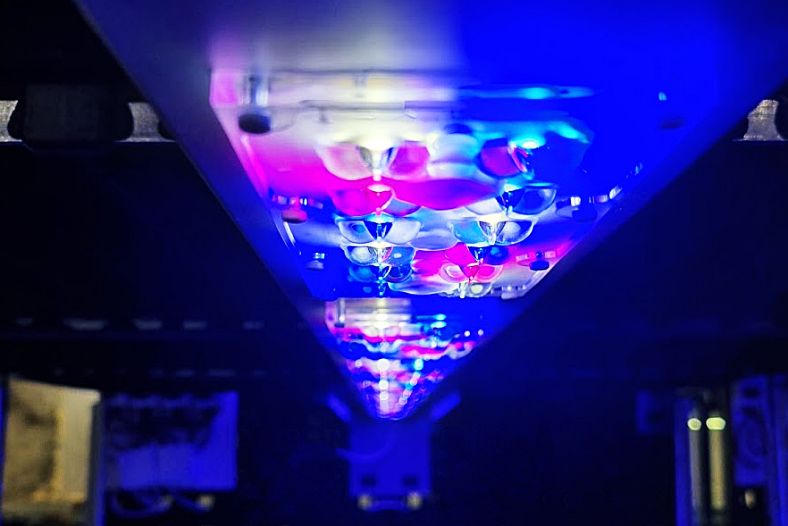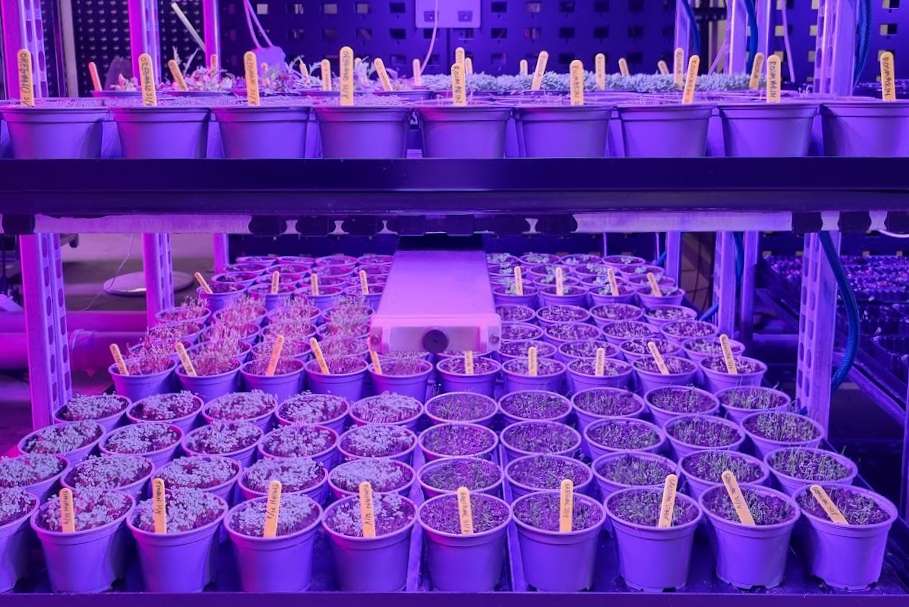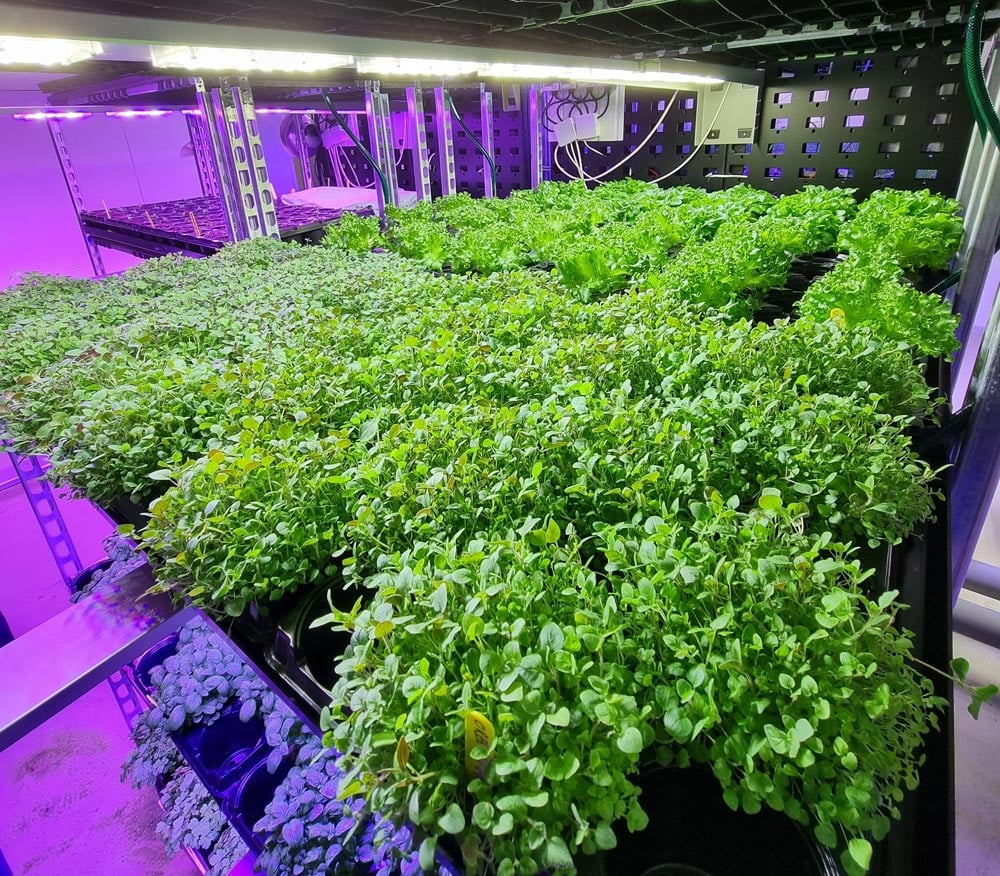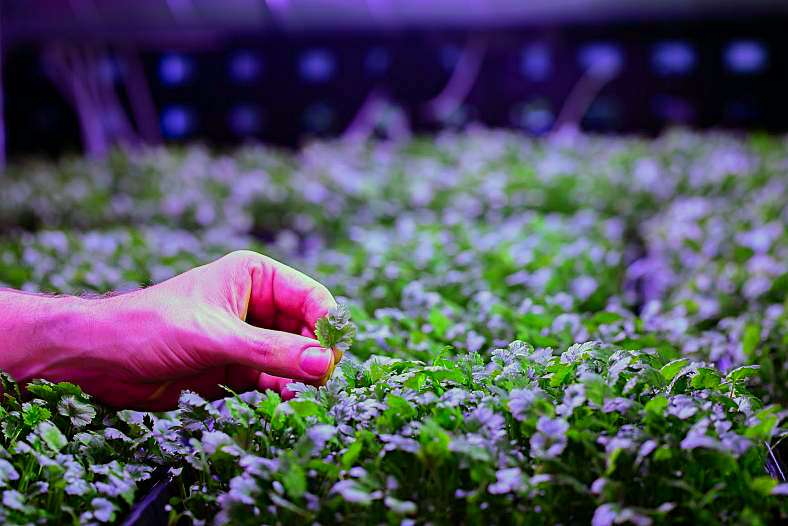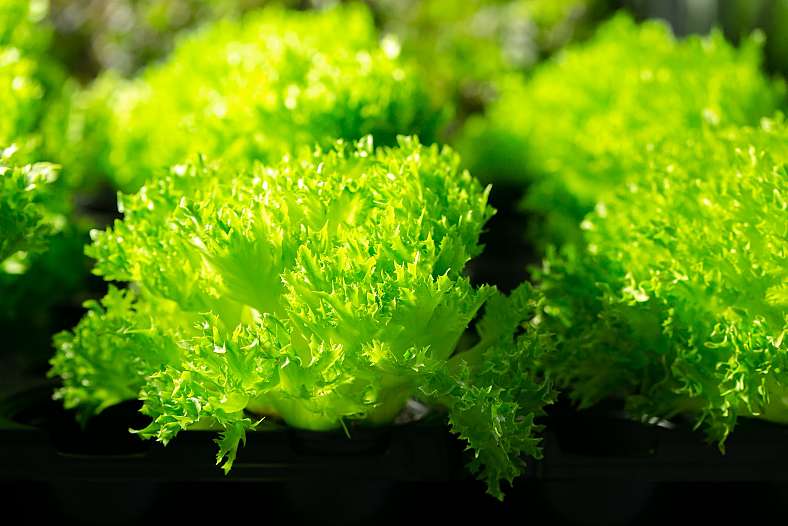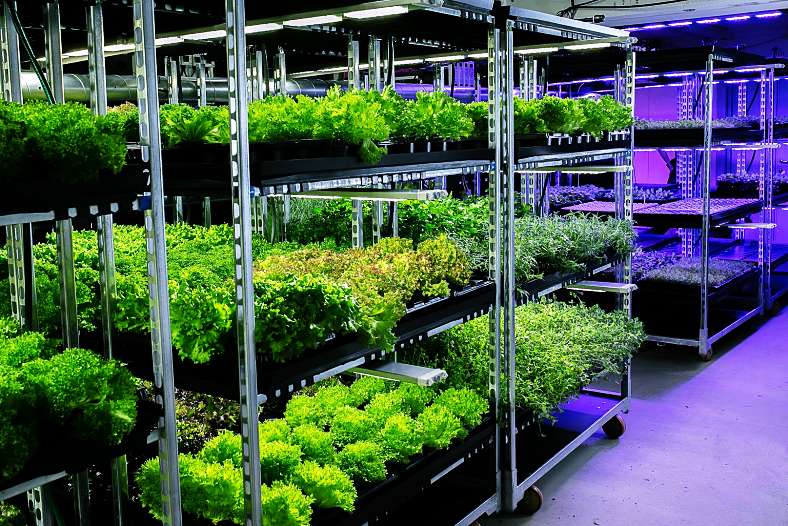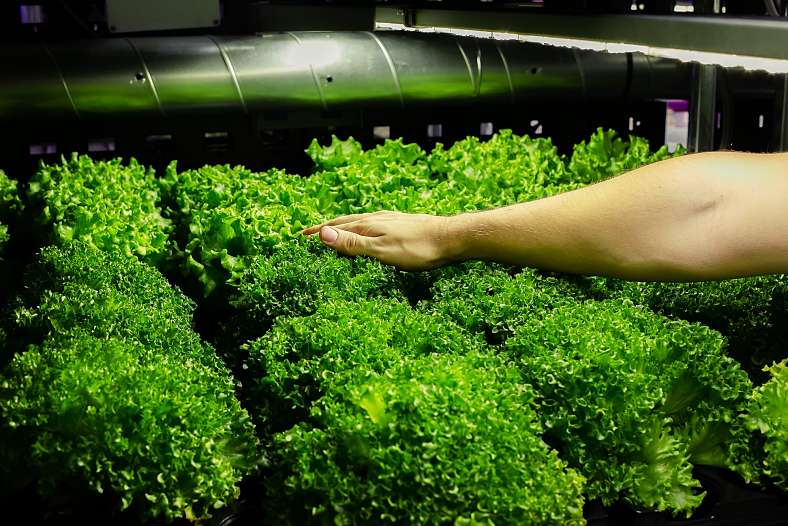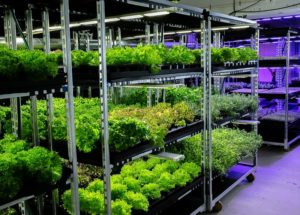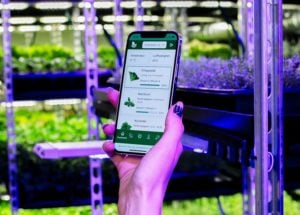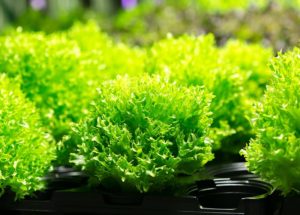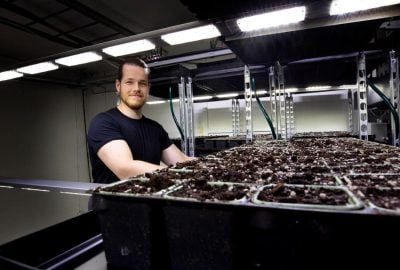Why should every vertical farming enthusiast ask, «what is VPD / RH»? Because they are often neglected in vertical farming but are crucial for plant growth optimization. In short, VPD stands for Vapor Pressure Deficit and RH for Relative Humidity. Read on to learn how to apply VPD / RH to maximize your vertical farm’s potential.
All plants need water, light, and nutrients to grow, but plant growth optimization relies on many more factors. VPD and RH are the most important factors when it comes to plant growth speed, which directly impacts any plant factory’s profitability.
How well you optimize your plant growth affects how many growth cycles you can start and how many crops you can cultivate per year. It all comes down to controlling your condition, and VPD / RH are crucial for maintaining plant growth acceleration.
In vertical farming, plants are typically moved between various growing zones. New environments tend to slow down growth, but your plants’ natural growth pattern is to accelerate growth as they get bigger. Well-controlled VPD / RH can solve this issue.
Related article: The best vertical plant factory solutions right now! (Coming soon)
Contents:
- What is VPD? (Vapor Pressure Deficit)
- What is RH? (Relative Humidity)
- How do VPD and RH affect plant growth?
- How does transpiration work?
- What factors affect plant transpiration?
- Common VPD / RH problems
- Why are VPD / RH important for plant growth?
- How to calculate and change VPD / RH
- How to calculate the leaf VPD (LVPD)
- Adjusting RH and VPD
What is VPD? (Vapor Pressure Deficit)
VPD stands for Vapor Pressure Deficit. It’s a unit that describes how much vapor there is in the air in relation to the saturation point. In other words, it tells you how much your plants can transpire before reaching the maximum amount of vapor the air can hold.
The greater the vapor pressure deficit, the more water the plants can transpire. It is crucial to keep the VPD balance sound. If the VPD gets too high, for instance, the plants will transpire more water than they can replace.
High VPD might be beneficial in shorter periods, though, since it creates an opportune moment for the plants to absorb water when the right VPD is restored. However, if VPD is too high for too long, the plants will not be able to recover.
If the VPD is too high, burnt leaves or petals may occur. This will typically «shock» your plants and stagnate growth until normal conditions are restored. Maintaining the right VPD will instead ensure that growth accelerates naturally after germination.
How to detect VPD anomalies in your plant factory?
Sometimes you may shock your plants with too high VPD by accident. By measuring the leaves’ thickness, you can get an indication of how good your VPD levels are. You can also estimate how well your plants will recover from the shock.
During the day, the leaves become thinner because they transpire water. Measure the thickness of the leaves at night. If they are thinner one night than they were the night before, the plants are not recovering well from the shock.
What is RH? (Relative Humidity)
RH stands for Relative Humidity and describes how much vapor the air contains compared to the maximum level it can hold. In other words, how humid the environment is in relation to full vapor-air saturation.
Relative Humidity is expressed in percentage and tells us two things: The humidity in any given plant growth facility and when the air in the said facility cannot hold any more water. Saturated air has a relative humidity of 100 percent.
Air temperature determines how much water vapor can be contained before saturation. Once the air is saturated, water vapor begins to condensate, which means that gas is converted to liquid.
In the case of water vapor, condensation occurs when the air cools. Condensation is the opposite of evaporation, which is when liquid changes into gas form. During condensation, clouds, dew, or a thin film of water will form on the plant leaves.
There are two main reasons your relative humidity change, the water vapor level or the air temperature is disturbed. Either way, it will affect your plant growth optimization.
How do VPD and RH affect plant growth?
Plant growth optimization is all about maintaining a perfect balance between air temperature, VPD, RH, and light. Find out how to optimize your lighting conditions in our article «Why are LED grow lights best for vertical farming?».
We argue that vapor pressure deficit and relative humidity are the most important factors because they affect water flow in plant stems and leaves. We call the process transpiration when water flow helps plants absorb nutrients.
Plants transpire for two reasons: For one, to absorb nutrients from the roots and CO2 from the air. When plants transpire, they «exhale» oxygen and «inhale» CO2 via tiny pores on the leaves. Plants use CO2 to perform photosynthesis.
Secondly, plants transpire to cool down, which is to say that they perspire, kind of like us humans. Radiation heats the plants, and transpiration keeps them from overheating. Therefore, it is vital to maintain an optimal balance between light, temperature, and humidity.
In bright light, the plants will heat up and release more water. As a result, humidity increases around the plant. If your plant growth system cannot regulate this, the humidity may become too high, and VPD will reach undesirable levels.
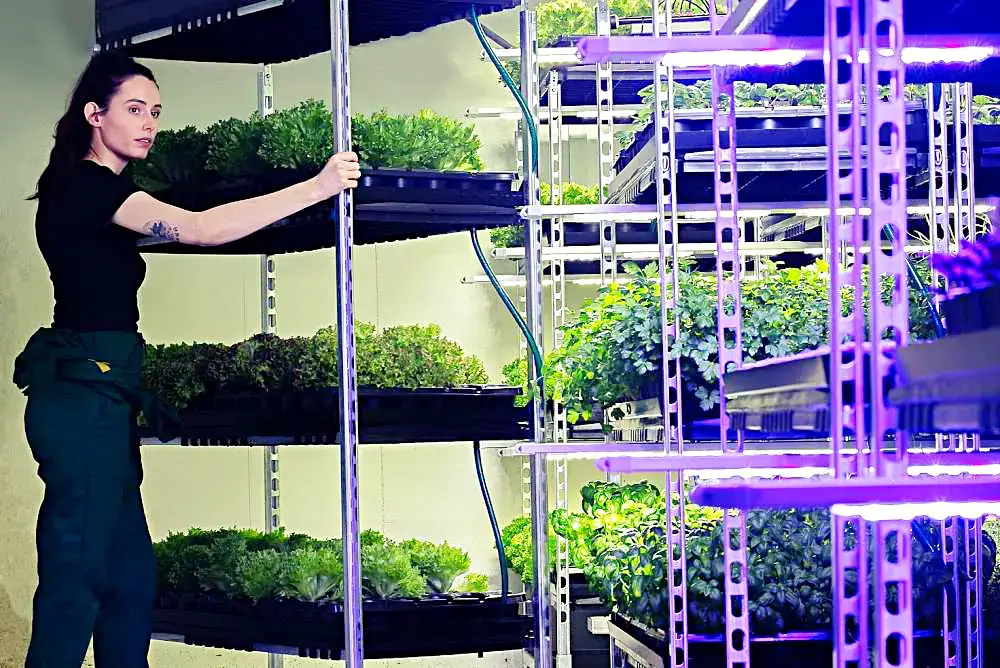
How does transpiration work?
The so-called «pores» with which plants exhale and inhale oxygen and CO2 are called stomata. These tiny openings under the plant leaves are where transpiration happens. Plants can only perform photosynthesis when the stomata are open.
If the stomata are closed, photosynthesis stops. However, plants prefer to avoid transpiration to preserve water. They constantly open and closes the stomata to take up sufficient CO2 but preserve enough water for optimal photosynthesis.
To understand how this affects plant transpiration and growth, we first need to examine the two types of transpiration: Cuticular and stomatal transpiration.
Cuticular transpiration
Cuticular transpiration occurs directly through the protective membrane on the surface of the leaves. This membrane prevents water and gas from passing in and out of the plant, meaning that only a tiny part of the transpiration happens here.
Stomatal transpiration
Stomatal transpiration happens via the stomata. Usually, this occurs during the day, as the stomata close at night to preserve water. About 90 percent of all plant transpiration is of the stomatal kind.
What factors affect plant transpiration?
Light: The light’s intensity and quality affect the stomata in plants and, therefore, the transpiration. Blue light tells the plants to open the stomata, meaning that blue light is necessary in the morning to open the stomates after nighttime.
Temperature: Different plants thrive in different temperatures. However, very high temperatures (above 30 degrees Celsius) can cause the stomates to close and the plant to transpire less.
Water in the leaves: To prevent leaves from drying up, plants will close the stomates on leaves with less water to prevent transpiration.
CO2 in the air: As mentioned, plants absorb CO2 via the stomates while transpiring water. However, if the concentration of CO2 in the air is too high, the stomata will close up.
Humidity and VPD: High RH usually means that the VPD is low, and low RH signals high VPD. Too high RH and low VPD prevent plant transpiration, while Low RH and high VPD lead to over-transpiration. If RH is too high over a long period, the stomata in plants can be damaged and lose functionality.
Changes in the air: Heavy air circulation around the plants increases transpiration. This is because water vapor around the leaves is transported away by the circulating air.
Moisture in the substrate: Dry or moist substrate also affects plant transpiration. Arid conditions reduce transpiration for the plants to preserve water. This prevents the plants from absorbing nutrients.
Common VPD / RH problems
Optimal plant growth requires both vapor pressure deficit and relative humidity to be perfectly balanced. Their levels should never be too high or too low.
Too high RH and low VPD
Too high humidity and too low VPD prevent proper plant transpiration because the air can only hold a certain amount of water vapor before it is saturated. How does it work in practice?
As much as 97 percent of the water absorbed by plants is transpired back into the air. Therefore, it is crucial to maintain stable and correct humidity in the production facilities, especially in the microclimate closest to the leaves.
Good humidity balance enables effective transpiration, keeps the plants cool, and optimizes nutrient absorption. If the humidity is too high, on the other hand, your plants will retain all the water they absorb.
Too high humidity leaves plants prone to overheating and dehydration. They won’t absorb more water or nutrients if they don’t transpire. Over time, too high humidity might lead to rot and, in a worst-case scenario, mold.
Lastly, too high relative humidity causes water to condensate and then cover the leaves’ surface with a thin film of moisture. Such moist conditions in microclimates provide an ample environment for various pathogens that can damage the plants.
Too low RH and high VPD
Too low humidity causes plants to dry out. This happens because the plants transpire as much as possible to compensate for the low humidity. Then they close the stomates to prevent stop from drying out.
If the humidity is too low, plants will not be able to absorb enough nutrients from the roots. As you might remember from above, the result of nutrient deficiency is halted photosynthesis.
Why are VPD / RH important for plant growth?
RH is important for plant growth because it directly affects several factors that can limit photosynthesis efficiency. Then, Liebig’s law of the minimum comes into play. It states that the least available resource always inhibits plant growth.
Poor VPD / RH balance will always hinder plant growth optimization, even if all other conditions are perfect. Your plants will never grow faster or better than the limiting factor allows.
Your goal is to maintain perfect microclimates around all plant leaves. This is achieved by upholding well-balanced VPD on all sides of the leaves, which will facilitate drastically increased growth efficiency.
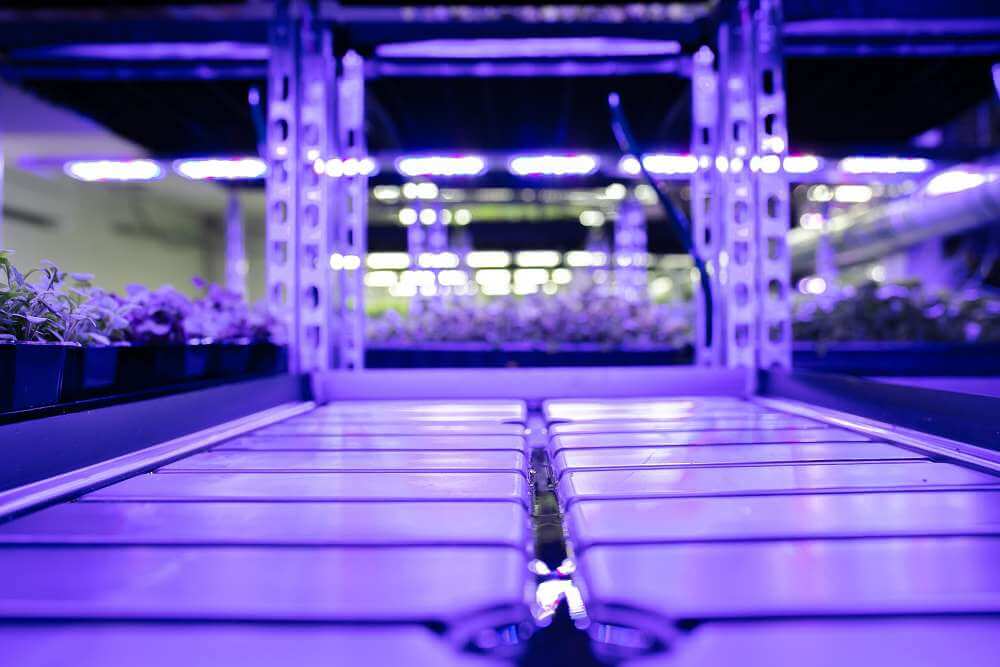
How to calculate and change VPD / RH
Most plants thrive when VPD is between 0.45 kPa and 1.25 kPa (kilopascals, the unit for pressure). The optimal VPD seems to be around 0.85 kPa.
VPD fluctuates slightly during the day. It rises in the morning when the sun shines and peaks around noon. After that, the VPD gradually decreases throughout the day.
To calculate VPD, you must measure air temperature, plant temperature, and relative humidity. Humidity is easily measured by a humidity meter. VPD can then be measured with a physical meter or calculated with a fixed formula.
Some important notes before explaining the calculation:
The saturation point for water vapor in the air is called «saturation vapor pressure» or SVP. The amount of water vapor in the air at any given time is called «actual vapor pressure» or AVP.
Basic calculation formulas:
AVP / SVP x 100 = RH %.
The maximum value for AVP is SVP at the given time, which means that SVP at any given time is 100 percent RH. If AVP reaches SVP, all excess moisture converts to liquid, such as dew.
VPD = SVP – AVP.
VPD is a unit for how much more vapor the air can absorb. To calculate the VPD, you need to know the temperature and humidity. The calculation consists of a few different operations, which are usually done by ready-made calculators or sensors:
Calculating VPD
1. Find out SVP
- SVP = 610.78 x e ^ (T / (T +238.2) x 17.2694)).
- T is in degrees Celsius.
- The result – SVP – is stated in pascals (divide by 1000 to get kilopascals (kPa)).
- «e» is a mathematical constant called Euler’s number, and its value is estimated to be 2.71828.
2. Calculate VPD
- SVP x (1 – RF / 100) = VPD
However, since plants are partly made of water, they perceive different VPD values than the VPD value in the air (Air VPD aka AVPD). To find out how your plants are doing and how they’ll develop, you need to consider both VPD values.
Additionally, you must consider the cooling effect of transpiration. To calculate this, you need to examine the difference between the air temperature around the upper parts of the plant and the temperature in the leaves.
Using an infrared (IR) thermometer is helpful for this purpose.
How to calculate the leaf VPD (LVPD)
Find out the air SVP (ASVP).
(Apply the same formula used for calculating SVP.)
Find out the leaf SVP (LSVP)
(Apply the same formula for ASVP, but use leaf temperature instead (usually 1-3 ˚C lower)).
LVPD = LSVP – (ASVP x RH / 100)
Adjusting RH and VPD
To adapt and change VPD / RH to your needs, there are mainly three variables you can influence:
- Temperature
- Dehumidification
- Circulation
With the right equipment, you can regulate and monitor these variables. The Avisomo vertical farming system is designed to circulate air directly to the plants on each level so that you can create as uniform conditions as possible.
Check out our introduction to the Avisomo system to learn more.
Temperature
Temperature control is crucial for optimal plant transpiration. By adjusting the temperature, you can regulate how much water vapor the air can hold before it’s saturated, thereby influencing how much the plants transpire.
Higher temperatures generally lead to more plant transpiration. Part of the reason is that the molecules move faster in warmer air and can hold more water vapor.
Dehumidification
To optimize plant growth, you must use the means at your disposal to limit plant transpiration. Increased humidity makes any growth environment susceptible to plant disease, and transpiration always raises your humidity levels.
Unfavorable growth conditions might cause you to sell plants with a high transpiration rate. This is unfortunate since the rate will stay high after the plants are placed in drier air in private homes. The result is that your plants will have a shorter shelf-life.
Large plant quantities in one single room are always vulnerable since there is a big chance that the VPD gets too low VPD and the RH too high. If this happens, you must use dehumidifiers to regulate your levels and stabilize optimal values.
Dehumidifiers help you prevent the air from becoming saturated with water vapor.
Circulation and ventilation
Without total control of all growth factors, indoor production facilities quickly get too hot. Enhancing vertical farming ventilation and circulation can significantly improve plant growth conditions.
Additionally, air processing energy consumption can be minimized. Find out more about this topic in our article: How to reduce vertical farming energy consumption? For instance, we discuss how pumping CO2 back into the farming system reduces energy consumption.
Without reasonable VPD control, you will experience problems that can spread quickly and hinder optimal plant growth. In a worst-case scenario, plants become long-term damaged and can never recover.
Conclusion
VPD is very important for optimized plant growth and reduction of growth cycle speed. Due to highly controllable growth environments, VPD enables v-farms to optimize plant growth far beyond the capability of greenhouses.
However, VPD is often overlooked when planning commercial plant production. Yet, it is critical to consider for all vertical farm startups to maximize profits as early in the process as possible.
The Avisomo system’s air circulation is designed with findings from US research facilities in mind. In these facilities, they apply advanced tools for fluid dynamics to see how different fan configurations distribute temperature and humidity throughout the room.
Our design fully integrates the air distribution in the technical structure, ensuring even airflow throughout the levels. As such, the Avisomo system always provides good VPD conditions on every level.
Resources
CID: Transpiration in Plants: Its Importance and Applications
Fluence: Three Ways to Maximize a Vertical Farm’s Potential
Frontiers in Plant Science: Plant Factories Are Heating Up
HortiDaily: Why VPD is important in CEA farming
Science Direct: Relative Humidity (Psychrometrics 8.2.4.4)
Vaisala: Maximizing indoor farming potential by controlling costs with accurate measurement


